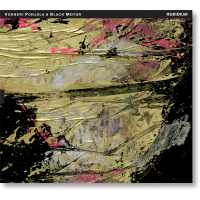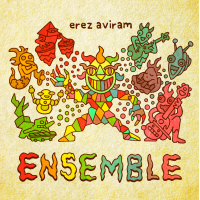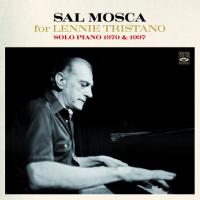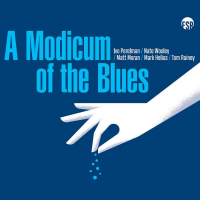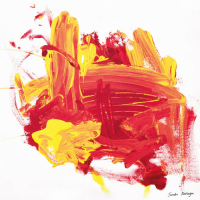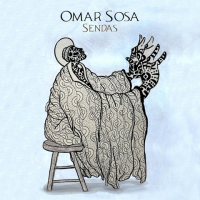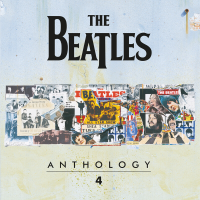Home » Jazz Articles » Extended Analysis » Tetsu Saitoh: Tetsu Saitoh: Strings & The Moon
Tetsu Saitoh: Tetsu Saitoh: Strings & The Moon
Saitoh approach to music and the double bass is different from other free improvisers. He does not bind himself only to non-idiomatic improvisations as other contemporary free improvisers tend to do. His musical language incorporated diverse influences ranging from Argentinian nuevo tango, Japanese and Korean traditional music, East Asian shamanic music and jazz and modern music, and is informed by Japanese ancient and modern theater, dance and painting aesthetics. This Kadima Collective label triptych volume is dedicated to Saitoh work, after previous volumes that were dedicated to another innovative double bassist, Mark Dresser.
As on previous volumes, this triptych includes a live disc, DVD, and an art book with 76 pages containing explanations of Saitoh compositions, drawings by Yuji Kobayashi, calligraphy by Chie Inui and paintings by vocal artist Lauren Newton, as well as exact information on the musicians and their instruments, including the fact that Saitoh named his 1877 instrument by the name of his mentor, "Barre" Phillips (and up to the name of the rosin manufacturer used for the bows).
The Moonstruck disc is a live recording from a full moon night in Tokyo in October 2005, and features Saitoh, Newton and frequent collaborator, master koto player Kazue Sawai, founder of the Sawai contemporary koto school. The trio performed once before in 2002 and the recording was its second meeting. Newton claims in the liner notes that the moon's light "transformed itself into some kind of magical allegory," to the seven improvised pieces, all titled after assorted names of the full moon. But even without this blessed inspiration these gifted and creative musicians were destined to create remarkable music. Their great sensitivity to sound—its timbre, dynamics, elastic properties—a unique sense of space and timing and emphatic and imaginative interplay, turns fragments of sounds and vocals, often ones that sound nonsensical, into sensual, nuanced, timeless textures. The music dismisses any distinction between West and East, as well as between serious and playful music. Saitoh himself recommends abandoning such observations. "If we investigate 'here, now, myself' thoroughly, we may be able to arrive at 'no-here, no-now, no-self'" and "stand on the same horizon," he writes in the liner notes.
But the real treat is the almost two-hour DVD of Saitoh Bass Ensemble Gen311). This bass quintet is comprised of Saitoh disciples and close associates. The ensemble planned to have a short tour in April and May 2011 with dancers, then the great east Japan earthquake happened in March 11, 2011, followed by the tsunami and Fukushima nuclear plant accident. Saitoh decided to go ahead and perform, but the impression of the recent tragedies charged the musicians and the performances with profound insights. "We began to truly understand the need to live each day to its fullest and without regret because we never knew what might happen," he writes.
Saitoh's six compositions for this ensemble encompass his many influences and feature the extended techniques that he has developed over almost thirty years as professional musician. He takes an equal role in this ensemble. The first composition, "Stone Out," commissioned originally for the koto ensemble Koto Vortex and performed for the first time in 2005. This piece introduces elements of Korean shaman music, and was played after a silent prayer for the victims of the earthquake and the tsunami. Its ritualistic spirit, including the adopted Korean 12-beats rhythm, that follows the year's seasons cycle, and Korean traditional techniques to play instruments similar to the koto, fretting and rubbing the strings or using the bow or sticks for different percussive effects, serve as a mean to tune the ensemble, the audience and the venue with the desired atmosphere. The ensemble keeps its rhythmic essence throughout it, denying obvious tendencies to form more personal expression for the sake of a collective one.
The second composition, the theatrical "Kahiyagura," inspired by Japanese poet Issui Yoshida expression for a mirage. Its first performance was done together with a dance performance of Jean Laurent Sassportes with a visual installation, member of Pina Bausch Company, transferred by Skype from Wupprtal, Germany. The visual installation captured a vision of blue sky and with white clouds, and this optimistic vision inspired Saitoh. It begins when the five musicians lie on the floor besides their instruments, slowly touching their instruments with their hands, then with one bow and then with two bows, all parts of the double bass and not only the strings, always experiencing with new techniques, as asked by Saitoh that asserts "the less and less technical music is, the richer it becomes." This piece ends when the five double basses are laid in one heap, the five musicians walk slowly around and between them, touching them with the bows, till all leave, except Pearl Alexander who lays beside them.
"Tango Eclipse" is influenced by Argentinian nuevo tango. Saitoh's first recording from 1986 already included elements of tango, and later he dedicated two albums to the compositions of Astor Piazzolla. This composition was commissioned for the Kanagawa Philharmonic Orchestra as a double concerto for bandoneon and double bass. The ensemble keeps its string-orchestral sound and its passionate, emotional impact, moving from slow and melancholic in the first movement to faster beats in the second and third movements, culminating in a fiery performance of the 5 beat high-speed tango. The following, elegiac "Ito-Saikakuji-Turkish March-Invitation," is using the ancient Lydian scale, "fitted for the music of life and death" according to Saitoh. The complicated harmonics of this scale create rich and surprising resonances within the double basses, awakening memories of old times. The reserved orchestral playing of the ensemble explores the evocative possibilities of this scale.
"Flooded Forest Theme-Night" was inspired by a painting of Kobayashi from 2010 that somehow foretold the events of the earthquake and the tsunami. Saitoh wrote nine songs for violin, accordion and double bass, reflecting the turbulent times, using compact themes. The songs are delivered with great passion by the ensemble. The last piece, "Ombak Hitam Sakuradai," the name of tidal waves in Malay, explores different percussive ideas derived from Indonesian and Malaysian music, performed in a pentatonic scale. This loose framework enable all members of the ensemble to explore and improvise with a variety of original, extended techniques on their instruments, including bowing with a stick, bowing with two bows, attaching wind bells to heads of the instruments, each showing a remarkable command of the double bass. The composition ends when each musician sings briefly, with embarrassed voices, their feelings about the musical experience. Saitoh, who sings last, wishes that his comrades' voices "will come together and make a song."
Saitoh is one of a kind, a true innovative artist who knows no limits or boundaries. This triptych may be his magnum opus.
Track Listing
CD: Ice Moon; Wolf Moon; More Than... ; Fish Moon; Rose Moon; Moonstruck--Tsukinutarete; Blue Moon. DVD: Stone Out; Kahiyagura; Tango Eclipse; Ito--Saikakuji--Turkish March--Invitation; Flooded Forest Theme--Night; Ombak Hitam Sakuradai.
Personnel
CD: Tetsu Saitoh: double bass (1-4, 6, 7); Lauren Newton: vocals; Kazue Sawai: 13 string koto, 17 strings bass koto (1, 2, 4-7). DVD: Bass Ensemble Gen311: Tetsu Saitoh: double bass, gong, Vietnamese hand bells, whistle, voice; Takashi Seo: double bass, gong, Vietnamese hand bells, whistle, voice; Kazuhiro Tanabe: double bass, gong, Vietnamese hand bells, whistle, voice; Masao Tajima: double bass, gong, Vietnamese hand bells, whistle, voice; Pearl Alexander: double bass, gong, Vietnamese hand bells, whistle, voice.
Album information
Title: Tetsu Saitoh: Strings & The Moon | Year Released: 2013 | Record Label: Kadima Collective
Tags
PREVIOUS / NEXT
Support All About Jazz
 All About Jazz has been a pillar of jazz since 1995, championing it as an art form and, more importantly, supporting the musicians who make it. Our enduring commitment has made "AAJ" one of the most culturally important websites of its kind, read by hundreds of thousands of fans, musicians and industry figures every month.
All About Jazz has been a pillar of jazz since 1995, championing it as an art form and, more importantly, supporting the musicians who make it. Our enduring commitment has made "AAJ" one of the most culturally important websites of its kind, read by hundreds of thousands of fans, musicians and industry figures every month.





